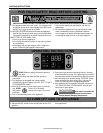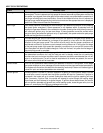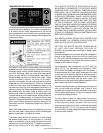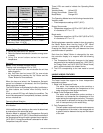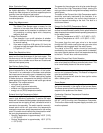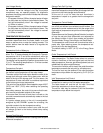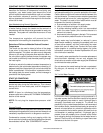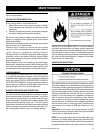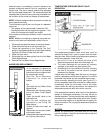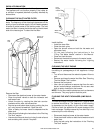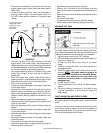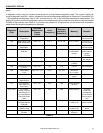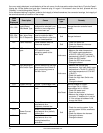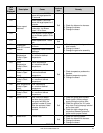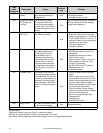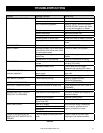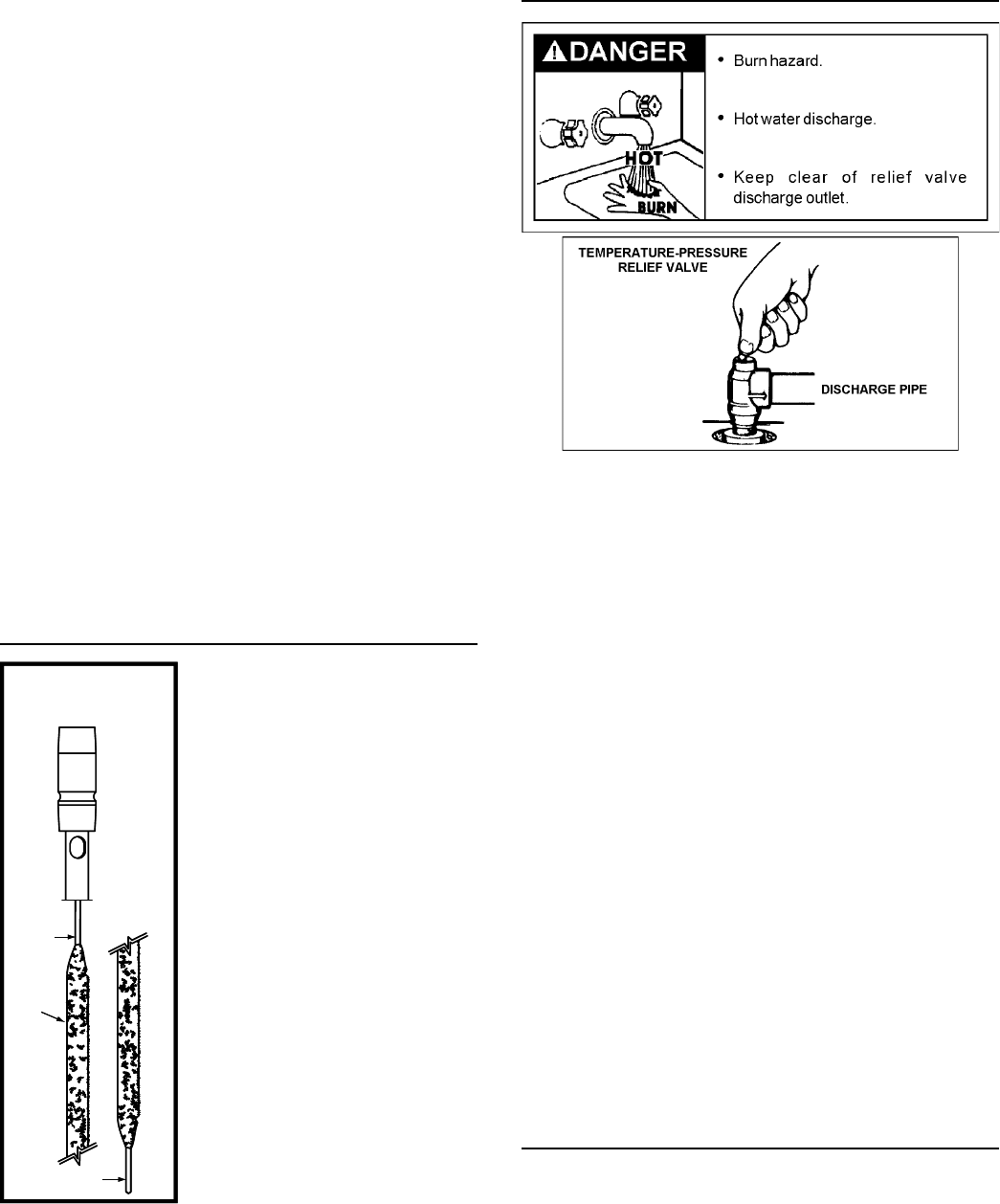
44 www.americanwaterheater.com
softened water is exceedingly corrosive because the
process substitutes sodium ions for magnesium and
calcium ions. The use of a water softener may decrease
the life of the water heater tank. The anode rod should be
inspected after 3 years of use and annually thereafter until
the condition of the anode rod dictates its replacement.
NOTE: Artifi cially softened water requires the anode rod
to be inspected annually.
The following are typical (but not all) signs of a depleted
anode rod:
• The majority of the rods diameter is less than 3/8”.
• Signifi cant sections of the support wire (approx. 1/3 or
more of the anode rod’s length) are visible.
If the anode rod show signs of either or both it should be
replaced.
NOTE: Whether re-installing or replacing the anode rod,
check for any leaks and immediately correct if found.
Disconnect the electrical power to the water heater.
Close the shutoff valve on the cold-water line.
Follow the instructions in the “Draining The Tank”
section in the Operating Manual to drain approximately
5 gallons (20 litres) of water from the tank.
Close the drain valve.
Disconnect the hot-water piping from the Hot Water
Outlet Nipple/Anode.
Remove the Hot Water Outlet Nipple/Anode.
ANODE ROD REPLACEMENT
• If it is nessesary to replace the
anode rod, refer to the detailed
instructions that are supplied with
the replacement anode.
• See the “Parts Reference
Illustration” for anode rod
location.
Else:
• Re-install the Hot Water Outlet
Nipple/Anode.
• Reconnect the hot-water piping
to the Hot Water Outlet Nipple/
Anode.
• Open the shutoff valve on the
cold-water line.
• Fill the tank following the
instructions in the “Filling The
Water Heater”.
• Check for leaks and repair as
required.
• Reconnect the electrical power
to the water heater.
• Restart the water heater following
the “Lighting Instructions”.
1.
2.
3.
4.
5.
6.
TEMPERATURE-PRESSURE RELIEF VALVE
OPERATION
FIGURE 37
The temperature-pressure relief valve lever must be
operated at least once a year to ensure that the water
ways are clear. When checking the temperature-pressure
relief valve operation, make sure that:
No one is in front of or around the outlet of the
temperature-pressure relief valve discharge line.
The water discharge will not cause any property
damage, as the water may be extremely hot.
A discharge line is connected to this valve, directing
the flow of hot water from the valve to a proper
placement for disposal.
If water does not fl ow freely when the lever is in the open
position, replacement of the valve is required. Turn off the
cold water inlet heater and call a qualifi ed service man.
If after manually operating the valve (see Figure 37), it
fails to completely reset and continues to release water,
immediately close the cold water inlet to the water
heater, follow the draining instructions, and replace the
temperature-pressure relief valve with a new one.
If the temperature-pressure relief valve on the appliance
weeps or discharges periodically, this may be due to
thermal expansion. You may have a check valve installed in
the water line or a water meter with a check valve. Consult
your local water supplier or a qualifi ed service agency for
further information. Do not plug the temperature-pressure
relief valve.
MOTORS
Motors are permanently lubricated and do not need
periodic lubrication. Keep fan and motor free of dust and
dirt by cleaning annually.
1.
2.
3.
Exposed
Support
Wire
Pitted
Anode
Rod
Exposed
Support Wire
Anode Rod Depletion
FIGURE 36
Exposed
Support
Wire
Pitted
Anode
Rod
Exposed
Support Wire
Anode Rod Depletion
FIGURE 36



